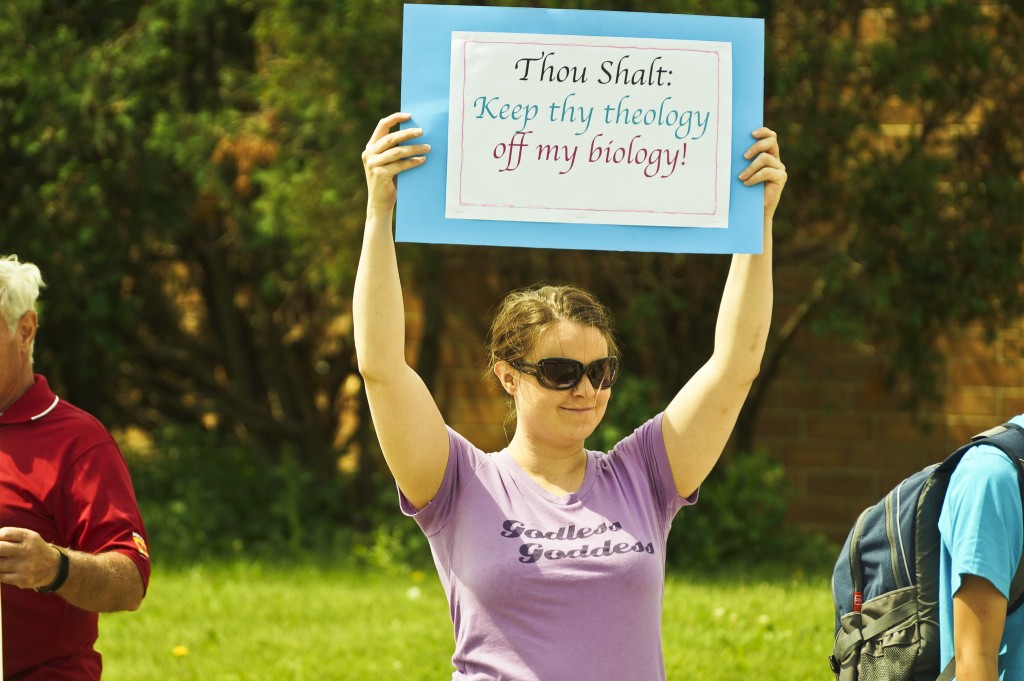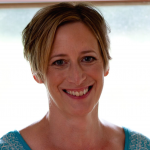In 1959, three Protestant ministers from New Haven, Connecticut filed lawsuits after the state legislature’s Public Health and Safety Committee killed a bill that would have legalized birth control in the state. The plaintiffs asked the state Supreme Court to declare whether the birth control statute conflicted with the part of the state constitution that guaranteed the “free exercise of religion and liberty.” The clergymen claimed they were “bound by the teachings of the church and our own religious beliefs to counsel married parishioners” on how to use contraceptive drugs and devices and “to give such advice in premarital counseling.” The law, they said, prohibited them from implementing their faith’s position on birth control and deprived citizens “of their liberty, freedom of speech and the right to freely practice their religion.”[1]
This case offers a window into how liberal clergy helped build a broad popular consensus in favor of birth control, at least for married couples, during the late 1950s and 1960s. By the time of the 1965 Griswold v. Connecticut decision, only Connecticut’s Catholic clergy and their followers continued to support their state’s draconian birth control law. Protestant and Jewish clergy, however, felt that Connecticut’s prohibition on birth control no longer reflected the mainstream of the modern American public. For these clergy members, the sanctity of heterosexual marriage and the morality of family planning were intertwined.

This concept of religious freedom is radically different from the one espoused by religious conservatives in the contemporary United States. In last year’s U.S. Supreme Court decision, Burwell v. Hobby Lobby Stores, Inc., the Court ruled that closely held corporations — those with more than half of their stock owned by fewer than five people — may choose to exclude contraception coverage from their employees’ health insurance plans created under the Affordable Care Act if doing so violates their religious beliefs. In other words, the Court determined that corporations, like individuals, have religious freedoms that are protected by the First Amendment of the U.S. Constitution, and requiring them to cover the cost of birth control impinges on those liberties.
In the decade leading up to the Griswold v. Connecticut decision it was liberal, not conservative, clergy who shaped the dialogue about religious freedom, and they used this to expand rather than restrict access to birth control. Beginning in the mid-1950s, clergy from across the religious spectrum argued that Connecticut’s ban on contraception interfered with their free exercise of religion. Rabbi Raphael Hillman of Westport, for example, called birth control opponents views “a form of bigotry” that denied him the right to practice his faith’s teachings on contraception. Reverend Ralph Minard, pastor of Burnside Methodist Church in East Hartford, charged the Catholic Church with “using legal channels to enforce their dogmas on others.”[2] Protestant and Jewish clergy were also key supporters of Estelle Griswold and Lee Buxton as their case worked its way through the U.S. court system. For example, in 1962, the Meriden Ministers Association gave “unanimous support” to Griswold and Buxton’s legal battle. The ministers affirmed “the right of the individual to determine the size and chronology of their family,” and strongly disapproved of existing legislation that prevented “the exercise of free conscience.”[3]
Connecticut was not the only state to see such collaboration between clergy and birth control proponents. Ministers and rabbis throughout the country played a “distinctive role” in making birth control socially respectable during the 1930s, 1940s, and 1950s. They did so by claiming that “responsible use of contraception” within marriage “was not only moral but also had a spiritual dimension” in that it enhanced the holy bonds between husband and wife. The audience for this liberal religious message on birth control expanded after the Second World War, as the size of congregations of mainline Protestant American congregations and Jewish synagogues grew tremendously.
The language used by the justices in the Griswold decision reflected this religious interpretation of birth control and its relationship to heterosexual marriage. The court opinion written by Justice William O. Douglas read, “Would we allow the police to search the sacred precincts of marital bedrooms for telltale signs of the use of contraceptives? The very idea is repulsive to the notions of privacy surrounding the marriage relationship,” he wrote. Marriage involved “a right of privacy older than the Bill of Rights — older than our political parties, older than our school system. Marriage is a coming together for better or for worse, hopefully enduring, and intimate to the degree of being sacred. It is an association that promotes a way of life, not causes; a harmony in living, not political faiths; a bilateral loyalty, not commercial or social projects. Yet it is an association for as noble a purpose as any involved in our prior decisions.”
This opinion was very much a product of the era’s conservative views about marriage and the family. Keep in mind that the Court at this time was composed entirely of men. These male justices assumed that the man was the head of the household and the state had no right to interfere in family matters except in cases of domestic violence. These men were horrified by the notion of police intruding into the sanctity of marital bedrooms much like their own – white, middle-class, and heterosexual. During the same era, the Court had no qualms about police raiding the homes of welfare recipients to check for a man in the house, or invading the bedrooms of homosexuals to charge them with violating anti-sodomy laws. In this sense, Griswold was a conservative decision in that it was based on protecting the privacy of heterosexual marriages. Within this reasoning, birth control was meant to enhance a married couple’s sexual pleasure, not allow women to have sexual freedom outside of marriage.
This emphasis on the sacred privacy of the marital bedroom in Griswold made it difficult for birth control proponents to apply the same notion of privacy to unmarried individuals, except within the context of premarital counseling. Nevertheless, sympathetic clergy worked with Planned Parenthood chapters and other health providers to seek strategies for giving single women and men access to reliable birth control. Among the most notable of these efforts was the work of college chaplains, faculty, and student health service staff. Even a few Catholic institutions permitted students to learn about birth control, although they would not allow contraceptives to be distributed on campus. For example, undergraduate women at Thomas More College, a division of Roman Catholic Fordham University in the Bronx, successfully petitioned the administration to add courses on birth control to the curriculum in 1967. The Dean of Students, Dr. Martin J. Meade, gave his full support to the students, stating that he believed it appropriate for any qualified member of the university health service staff to give accurate information on birth control, and saw this as a natural extension of existing courses on marriage and the family.[4] Of course, not all clergy supported these efforts, and the papal encyclical Humanae Vitae issued by Pope Paul VI in 1968 reiterated the Catholic Church’s opposition to artificial methods of birth control.
Since the 1970s, we have also seen the rise of conservative Protestant groups who have the notion of religious liberty to restrict access to contraception. Some religious conservatives – including some evangelical Protestants and Mormons — have no religious objection to birth control per se. However, they tend to support the very narrow view of the relationship between contraception and marital privacy framed in the original language of the Griswold decision. These conservatives object to the contraceptive coverage mandate in the Affordable Care Act because they believe it thwarts the religious freedom of business owners to refuse to cover certain forms of contraception they consider to be abortifacents (e.g. emergency contraception and some intrauterine devices). The fact that many of these same conservatives opposed comprehensive sex education and contraception for unmarried people is perfectly consistent with their view that birth control is meant to enhance heterosexual marital bonds.
Meanwhile, the beliefs espoused by liberal clergy have evolved to include more recent notions of sexual equality. This is evidenced not only by their advocacy on behalf of reproductive rights but also their support for gay marriage. Last summer, following the Burwell v. Hobby Lobby decision, members of the United Church of Christ, the Unitarian Universalist Association, and Planned Parenthood expressed their disgust with the ruling by handing out condoms to customers in front of a Hobby Lobby Store in Illinois. In the midst of today’s culture wars, when religion and sex seem at odds with each other, it is important to recognize the critical role that liberal clergy members continue to play in supporting reproductive and sexual rights for all.
[1] “3 Clergymen File Birth Law Suits,” Hartford Courant May 5, 1959, p. 4.
[2] “Spirited Hearing Develops On Birth Control Repeal,” Hartford Courant Apr 21, 1955, p. 14.
[3] “Meriden Ministers Back Birth Control Law Fight,” Hartford Courant Feb 16, 1962, p. 5.
[4] Martin Gansberg, “150 Fordham Women Petition for a Class on Birth Control,” New York Times (7 May 1967), 41. For more information on the history of campus birth control services, see Heather Munro Prescott, Student Bodies: The Influence of Student Health Services on American Society (Ann Arbor: University of Michigan Press, 2007).
 Heather Munro Prescott is a Professor of History at the Central Connecticut State University. She is the author of A Doctor of Their Own: The History of Adolescent Medicine (Harvard, 1998), Student Bodies: The Impact of Student Health on American Society and Medicine (University of Michigan Press, 2007) and The Morning After; A History of Emergency Contraception in the United States (Rutgers University Press, 2011). Prescott blogs at knittingclio.org and tweets from @hmprescott.
Heather Munro Prescott is a Professor of History at the Central Connecticut State University. She is the author of A Doctor of Their Own: The History of Adolescent Medicine (Harvard, 1998), Student Bodies: The Impact of Student Health on American Society and Medicine (University of Michigan Press, 2007) and The Morning After; A History of Emergency Contraception in the United States (Rutgers University Press, 2011). Prescott blogs at knittingclio.org and tweets from @hmprescott.

NOTCHES: (re)marks on the history of sexuality is licensed under a Creative Commons Attribution-NonCommercial-NoDerivatives 4.0 International License.
Based on a work at www.notchesblog.com.
For permission to publish any NOTCHES post in whole or in part please contact the editors at NotchesBlog@gmail.com





A small point; emergency contraception is considered to work by delaying or preventing ovulation. Thus, it is not an abortifacient.
This is a really important perspective on the institutional relationship between religion and sexuality in the US. The Catholic church also moved toward more sex-positive views during the same period (still no contraception, but sex became a positive good within marriage, not just tolerated for the sake of making babies). I think clergy have liberalized around sex/sexuality with an eye on the value of creating and sustaining deeply-bonded, emotionally-intimate, lifetime marriages. It is striking to me the degree to which this perspective has become common sense to Americans, including the majority of the Supreme Court.
I just ran across this article after researching Griswold v Connecticut
What a gem! It was informative and enlightening. Thank you